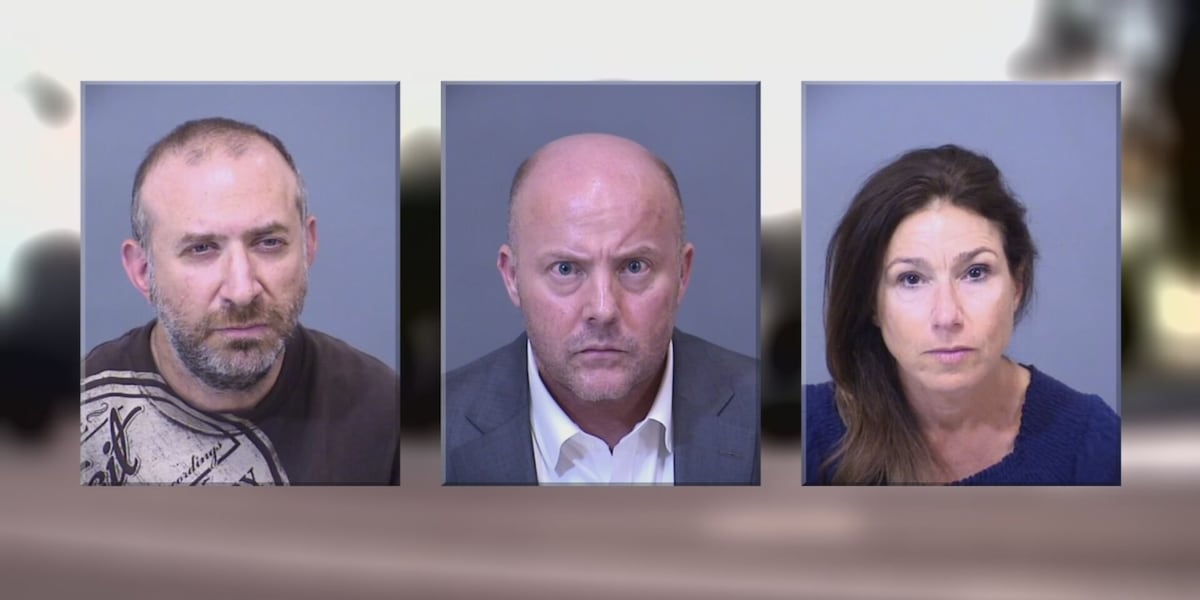Health
Now that the holidays are in full swing, people are meeting up with friends, relatives and co-workers who might seem a little … different.
Maybe their face is glistening with sweat — on a cold, wintry night. Or they can’t stop licking their lips. Perhaps they’re chattering nonstop, or not speaking much at all.
These and other traits could be simple holiday stress — or they might be signs of drug use, according to experts.
And drugs that are combined with alcohol at holiday gatherings can be particularly risky.
“With alcohol, any of the depressants, any opiates, any barbiturates or benzodiazepines, can be very dangerous,” Emily Skogrand, clinical pharmacist at Oregon Health and Science University, told The Post.
“The risk of harm is so much greater” with liquor, Skogrand said. While teenagers and young people are often profiled as drug users, older adults — who may not metabolize prescription drugs well — are also at risk.
“It’s really anyone can take too much at any one time,” Skogard said. And many prescription drugs have legitimate uses, so don’t jump to conclusions about who’s using what or why, but use some discretion when someone is showing signs of abusing them.
When you’re socializing with someone who may have overindulged on any substance, instead of dismissing them or your own concerns, offer to drive them home, or take advantage of ride-sharing services like Uber or Lyft.
But if you’re concerned about a friend or family member who might need help with drug use, remember that they may not realize that their drug (or alcohol) habit has become a problem.
Experts at Oregon Trail Recovery and other organizations note that although it can be hard to know what you can do or how to cope, most people overcome their issues with drugs before any harm occurs.
In cases where opioids such as fentanyl — or prescription painkillers like oxycodone or hydrocodone — might be involved, Skogrand suggests people take advantage of the fact that Narcan (naloxone) can help to prevent an overdose.
Naloxone is now readily available as a nasal spray or an injectable without a prescription at many drug stores throughout New York, New Jersey and in many other states.
“Naloxone could potentially help if there’s a mixed picture of substances and one of those happens to be an opiate,” Skogrand said.
Here are a few of the most widely used drugs — prescription as well as recreational and illegal — that you’re likely to encounter.
Benzodiazepines
Benzodiazepines, among the most-prescribed drugs, are nervous system depressants. They may be abused by people who are seeking relaxation, trying to sleep or looking for a way to manage stress and anxiety, according to the Indiana Department of Health.
Valium (diazepam), Xanax (alprazolam), Ativan (lorazepam), Klonopin (clonazepam) and Librium (chlordiazepoxide) are oft-prescribed “benzos.”
More than 30 million US adults reported using benzodiazepines, but abuse of these drugs — especially among people ages 18 to 25 — accounted for 17% of benzodiazepine use overall, according to a 2019 report.
“When someone becomes dependent on benzos, it’s abruptly stopping that that can be a problem,” Skogrand noted.
People who are using or abusing benzodiazepines or barbiturates may show the following signs:
K2 and Spice
K2 and Spice are synthetic cannabinoid drugs that can be sprayed on dried herbs and smoked, prepared as an herbal tea or vaporized in e-cigarettes.
Far from being “natural” substitutes for marijuana, these manmade drugs are illegal in most states and can be dangerous, since their ingredients are unknown and could contain any number of substances, according to the Mayo Clinic.
Signs of recent use can include:
Bath salts
Synthetic cathinones, commonly called “bath salts,” are mind-altering substances with effects somewhat similar to amphetamines like ecstasy (MDMA).
Eaten, snorted, inhaled or injected and powerfully addictive, bath salts can cause severe intoxication, which can result in the following health effects — or death:
Crystal meth
Crystal meth is methamphetamine in the form of a rock-like crystal that’s usually opaque white or light blue. It can be smoked, snorted or injected, according to American Addiction Centers.
Regardless of how it’s used, crystal meth produces a rapid high that can last for hours. The potent stimulant can cause:
Ecstasy/MDMA
This synthetic drug — chemically similar to both stimulants and hallucinogens — produces feelings of increased energy, pleasure, emotional warmth and distortions of time perception.
It has become popular at raves, nightclubs and other events, where it’s sometimes referred to as molly, according to the National Institute on Drug Abuse. People using ecstasy may display:
Opioids
Opioids — narcotic painkillers made from opium or produced synthetically — include heroin, morphine, codeine, methadone, fentanyl and oxycodone.
They can be highly addictive, and people who’ve been using opioids may need doctor-prescribed drug substitution to treat their addiction. Signs of opioid use and dependence might include:
Marijuana
Marijuana or cannabis is a widely used recreational drug that’s now legal in many states, though it remains illegal on the federal level.
According to the Centers for Disease Control and Prevention, over 48 million people, or about 18% of Americans, used it at least once in 2019. Signs of use include:
Load more…
{{/isDisplay}}{{#isAniviewVideo}}
{{/isAniviewVideo}}{{#isSRVideo}}
{{/isSRVideo}}

Rachel Carter is a health and wellness expert dedicated to helping readers lead healthier lives. With a background in nutrition, she offers evidence-based advice on fitness, nutrition, and mental well-being.







